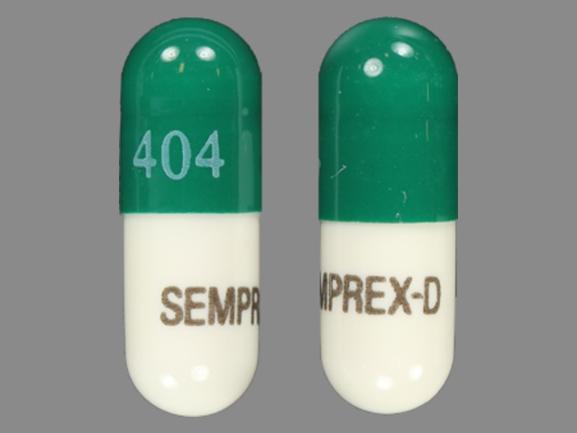Acrivastine/pseudoephedrine Interactions
There are 489 drugs known to interact with acrivastine/pseudoephedrine, along with 10 disease interactions, and 2 alcohol/food interactions. Of the total drug interactions, 29 are major, 453 are moderate, and 7 are minor.
- View all 489 medications that may interact with acrivastine/pseudoephedrine
- View acrivastine/pseudoephedrine alcohol/food interactions (2)
- View acrivastine/pseudoephedrine disease interactions (10)
Most frequently checked interactions
View interaction reports for acrivastine / pseudoephedrine and the medicines listed below.
- 5-HTP (5-hydroxytryptophan)
- Acetylsalicylic Acid (aspirin)
- Ambien (zolpidem)
- Champix (varenicline)
- Doxy 100 (doxycycline)
- Ginkgo Biloba (ginkgo)
- Januvia (sitagliptin)
- Lamictal (lamotrigine)
- Symbicort (budesonide / formoterol)
- Trimpex (trimethoprim)
- Ventolin (albuterol)
- Vitamin C (ascorbic acid)
- Vitamin D3 (cholecalciferol)
Acrivastine/pseudoephedrine alcohol/food interactions
There are 2 alcohol/food interactions with acrivastine / pseudoephedrine.
Acrivastine/pseudoephedrine disease interactions
There are 10 disease interactions with acrivastine / pseudoephedrine which include:
- cardiovascular disease
- renal dysfunction
- anticholinergic effects
- asthma/COPD
- cardiovascular
- GI narrowing
- PKU
- BPH
- diabetes
- glaucoma
More about acrivastine / pseudoephedrine
- acrivastine/pseudoephedrine consumer information
- Compare alternatives
- Reviews (11)
- Side effects
- Dosage information
- During pregnancy
- Drug class: upper respiratory combinations
Related treatment guides
Drug Interaction Classification
| Highly clinically significant. Avoid combinations; the risk of the interaction outweighs the benefit. | |
| Moderately clinically significant. Usually avoid combinations; use it only under special circumstances. | |
| Minimally clinically significant. Minimize risk; assess risk and consider an alternative drug, take steps to circumvent the interaction risk and/or institute a monitoring plan. | |
| No interaction information available. |
See also:
Further information
Always consult your healthcare provider to ensure the information displayed on this page applies to your personal circumstances.


